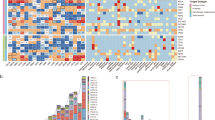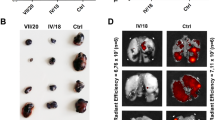Abstract
Central to the goal of precision medicine lies the ability to target an effective drug specifically to diseased cells, thereby avoiding the uptake and collateral toxicity that arises when good drugs accumulate in healthy cells. While antibody-drug conjugates (ADCs) have pioneered many efforts in this field, small molecule drug conjugates (SMDCs) with high specificities for diseased cell types are now displaying equal if not greater potential because of their improved abilities to penetrate solid tissues. For both technologies, however, success has invariably depended on an ability to identify a receptor that is overexpressed on the desired pathologic cell (e.g., cancer cell, virus-infected cell, inflammatory cell, etc.), but absent or weakly expressed on all other healthy cells. While few cell surface receptors can satisfy these criteria, one that has attracted considerable recent attention has been carbonic anhydrase IX (CA IX), a cell surface enzyme that is expressed in virtually all hypoxic tissues, but minimally expressed, if at all, in healthy tissues. Because most solid tumors are hypoxic, CA IX-targeted SMDCs are now being explored as broad-spectrum agents for the diagnosis and therapy of CA IX-expressing malignancies. The following chapter highlights some of the groundbreaking research in this area and provides key insights into how the design of a CA IX-targeted SMDC can impact efficacy.
Access this chapter
Tax calculation will be finalised at checkout
Purchases are for personal use only
Similar content being viewed by others
References
Marks, I.S., et al.: Development of a small molecule tubulysin B conjugate for treatment of carbonic anhydrase IX receptor expressing cancers. Mol. Pharm. 15, 2289–2296 (2018)
Roy, J., Kaake, M., Srinivasarao, M., Low, P.S.: Targeted tubulysin B hydrazide conjugate for the treatment of luteinizing hormone-releasing hormone receptor-positive cancers. Bioconjug. Chem. 29, 2208–2214 (2018)
Shum, C.F., et al.: Novel use of folate-targeted intraoperative fluorescence, OTL38, in Robot-assisted laparoscopic partial nephrectomy: report of the first three cases. J. Endourol. Case Rep. 2, 189–197 (2016)
Thurber, G.M., Schmidt, M.M., Wittrup, K.D.: Antibody tumor penetration: transport opposed by systemic and antigen-mediated clearance. Adv. Drug Deliv. Rev. 60, 1421–1434 (2008)
Vlashi, E., Kelderhouse, L.E., Sturgis, J.E., Low, P.S.: Effect of folate-targeted nanoparticle size on their rates of penetration into solid tumors. ACS Nano 7, 8573–8582 (2013)
Mahalingam, S.M., et al.: Evaluation of novel tumor-targeted near-infrared probe for fluorescence-guided surgery of cancer. J. Med. Chem. 61(21), 9637–9646 (2018)
Paulos, C.M.: Ligand binding and kinetics of folate receptor recycling in vivo: impact on receptor-mediated drug delivery. Mol. Pharmacol. 66, 1406–1414 (2004)
Paganelli, G., De Giorgi, U.: [177 Lu]-PSMA-617 for targeted prostate cancer treatment: a magic bullet? Lancet Oncol. 19, 725–726 (2018)
Parker, N., et al.: Folate receptor expression in carcinomas and normal tissues determined by a quantitative radioligand binding assay. Anal. Biochem. 338, 284–293 (2005)
Ross, J.F., et al.: Folate receptor type β is a neutrophilic lineage marker and is differentially expressed in myeloid leukemia. Cancer 85, 348–357 (1999)
Shen, J., et al.: Folate receptor-β constitutes a marker for human proinflammatory monocytes. J. Leukoc. Biol. 96, 563–570 (2014)
Nakashima-Matsushita, N., et al.: Selective expression of folate receptor β and its possible role in methotrexate transport in synovial macrophages from patients with rheumatoid arthritis. Arthritis Rheum. 42, 1609–1616 (1999)
Low, P.: Folate receptor-targeted drugs for cancer and inflammatory diseases. Adv. Drug Deliv. Rev. 56, 1055–1058 (2004)
Schupp, J.C., et al.: Macrophage activation in acute exacerbation of idiopathic pulmonary fibrosis. PLoS One 10(ed Ryffel, B.), e0116775 (2015)
Han, W., et al.: Molecular imaging of folate receptor β-positive macrophages during acute lung inflammation. Am. J. Respir. Cell Mol. Biol. 53, 50–59 (2015)
Chia, J.J., Lu, T.T.: Update on macrophages and innate immunity in scleroderma. Curr. Opin. Rheumatol. 27, 530–536 (2015)
Zhou, D., et al.: Critical involvement of macrophage infiltration in the development of Sjögren’s syndrome-associated dry eye. Am. J. Pathol. 181, 753–760 (2012)
Wright, G.L., Haley, C., Beckett, M.L., Schellhammer, P.F.: Expression of prostate-specific membrane antigen in normal, benign, and malignant prostate tissues. Urol. Oncol. Semin. Orig. Investig. 1, 18–28 (1995)
Heitkötter, B., et al.: Neovascular PSMA expression is a common feature in malignant neoplasms of the thyroid. Oncotarget 9(11), 9867–9874 (2018)
Schmidt, L.H., et al.: Prostate specific membrane antigen (PSMA) expression in non-small cell lung cancer. PLoS One 12(ed Ahmad, A.), e0186280 (2017)
Stock, K., et al.: Neovascular prostate-specific membrane antigen expression is associated with improved overall survival under palliative chemotherapy in patients with pancreatic ductal adenocarcinoma. Biomed. Res. Int. 2017, 1–8 (2017)
Silver, D.A., Pellicer, I., Fair, W.R., Heston, W.D., Cordon-Cardo, C.: Prostate-specific membrane antigen expression in normal and malignant human tissues. Clin. Cancer Res. Off. J. Am. Assoc. Cancer Res. 3, 81–85 (1997)
Smyth, L.G., et al.: Carbonic anhydrase IX expression in prostate cancer. Prostate Cancer Prostatic Dis. 13, 178–181 (2010)
Genega, E.M., et al.: Carbonic anhydrase IX expression in renal neoplasms: correlation with tumor type and grade. Am. J. Clin. Pathol. 134, 873–879 (2010)
İlie, M., et al.: High levels of carbonic anhydrase IX in tumour tissue and plasma are biomarkers of poor prognostic in patients with non-small cell lung cancer. Br. J. Cancer 102, 1627–1635 (2010)
Loncaster, J.A., et al.: Carbonic anhydrase (CA IX) expression, a potential new intrinsic marker of hypoxia: correlations with tumor oxygen measurements and prognosis in locally advanced carcinoma of the cervix. Cancer Res. 61, 6394–6399 (2001)
Ivanov, S., et al.: Expression of hypoxia-inducible cell-surface transmembrane carbonic anhydrases in human cancer. Am. J. Pathol. 158, 905–919 (2001)
Mboge, M., Mahon, B., McKenna, R., Frost, S.: Carbonic anhydrases: role in pH control and cancer. Metabolites 8, 19 (2018)
Chrastina, A.: High cell density-mediated pericellular hypoxia is a crucial factor inducing expression of the intrinsic hypoxia marker CA IX in Vitro in HeLa cells. Neoplasma 50, 251–256 (2003)
Mahalingam, S.M., Chu, H., Liu, X., Leamon, C.P., Low, P.S.: Carbonic anhydrase IX-targeted near-infrared dye for fluorescence imaging of hypoxic tumors. Bioconjug. Chem. 29, 3320–3331 (2018)
Rami, M., et al.: Carbonic anhydrase inhibitors: design of membrane-impermeant copper(II) complexes of DTPA-, DOTA-, and TETA-tailed sulfonamides targeting the tumor-associated transmembrane isoform IX. ChemMedChem 3, 1780–1788 (2008)
Srinivasarao, M., Low, P.S.: Ligand-targeted drug delivery. Chem. Rev. 117, 12133–12164 (2017)
Srinivasarao, M., Galliford, C.V., Low, P.S.: Principles in the design of ligand-targeted cancer therapeutics and imaging agents. Nat. Rev. Drug Discov. 14, 203–219 (2015)
Lau, J., et al.: Synthesis and evaluation of 18F-labeled tertiary benzenesulfonamides for imaging carbonic anhydrase IX expression in tumours with positron emission tomography. Bioorg. Med. Chem. Lett. 24, 3064–3068 (2014)
Asakawa, C., et al.: Radiosynthesis of three [11C]ureido-substituted benzenesulfonamides as PET probes for carbonic anhydrase IX in tumors. Bioorg. Med. Chem. Lett. 21, 7017–7020 (2011)
Lau, J., et al.: PET imaging of carbonic anhydrase IX expression of HT-29 tumor xenograft mice with 68Ga-labeled benzenesulfonamides. Mol. Pharm. 13, 1137–1146 (2016)
Lau, J., et al.: Trimeric radiofluorinated sulfonamide derivatives to achieve in vivo selectivity for carbonic anhydrase IX-targeted PET imaging. J. Nucl. Med. 56, 1434–1440 (2015)
Lu, G., et al.: Synthesis and SAR of novel Re/ 99mTc-labeled benzenesulfonamide carbonic anhydrase IX inhibitors for molecular imaging of tumor hypoxia. J. Med. Chem. 56, 510–520 (2013)
Akurathi, V., et al.: Synthesis and biological evaluation of a 99mTc-labelled sulfonamide conjugate for in vivo visualization of carbonic anhydrase IX expression in tumor hypoxia. Nucl. Med. Biol. 37, 557–564 (2010)
Can, D., et al.: [(Cp-R)M(CO)3] (M= Re or 99mTc) arylsulfonamide, arylsulfamide, and arylsulfamate conjugates for selective targeting of human carbonic anhydrase IX. Angew. Chem. Int. Ed. 51, 3354–3357 (2012)
Lv, P.C., Putt, K.S., Low, P.S.: Evaluation of nonpeptidic ligand conjugates for SPECT imaging of hypoxic and carbonic anhydrase IX-expressing cancers. Bioconjug. Chem. 27, 1762–1769 (2016)
Lv, P.C., Roy, J., Putt, K.S., Low, P. S.: Evaluation of a carbonic anhydrase IX-targeted near-infrared dye for fluorescence-guided surgery of hypoxic tumors. Mol. Pharm. 13, 1618–1625 (2016)
Terada, T., Inui, K.i.: In: Current Topics in Membranes, pp. 257–274. Elsevier, Amsterdam (2012)
Lv, P.C., Roy, J., Putt, K.S., Low, P.S.: Evaluation of nonpeptidic ligand conjugates for the treatment of hypoxic and carbonic anhydrase IX-expressing cancers. Mol. Cancer Ther. 16, 453–460 (2017)
Krall, N., Pretto, F., Mattarella, M., Muller, C., Neri, D.: A 99mTc-labeled ligand of carbonic anhydrase IX selectively targets renal cell carcinoma in vivo. J. Nucl. Med. 57, 943–949 (2016)
Krall, N., et al.: A small-molecule drug conjugate for the treatment of carbonic anhydrase IX expressing tumors. Angew. Chem. Int. Ed. 53, 4231–4235 (2014)
Krall, N., Pretto, F., Neri, D.: A bivalent small molecule-drug conjugate directed against carbonic anhydrase IX can elicit complete tumour regression in mice. Chem. Sci. 5, 3640 (2014)
Reddy, J.A., et al.: Pre-clinical evaluation of EC1456, a folate-tubulysin anti-cancer therapeutic. Sci. Rep. 8(1), 8943 (2018)
Fisher, R.E., et al.: Exploratory study of 99mTc-EC20 imaging for identifying patients with folate receptor-positive solid tumors. J. Nucl. Med. 49, 899–906 (2008)
Bao, B., et al.: In vivo imaging and quantification of carbonic anhydrase IX expression as an endogenous biomarker of tumor hypoxia. PLoS One 7, e50860 (2012)
Wichert, M., et al.: Dual-display of small molecules enables the discovery of ligand pairs and facilitates affinity maturation. Nat. Chem. 7, 241–249 (2015)
Leamon, C.P., et al.: Reducing undesirable hepatic clearance of a tumor-targeted vinca alkaloid via novel saccharopeptidic modifications. J. Pharmacol. Exp. Ther. 336, 336–343 (2011)
Dudutienė, V., et al.: Discovery and characterization of novel selective inhibitors of carbonic anhydrase IX. J. Med. Chem. 57, 9435–9446 (2014)
Majmundar, A.J., Wong, W.J., Simon, M.C.: Hypoxia-inducible factors and the response to hypoxic stress. Mol. Cell 40, 294–309 (2010)
Morandi, A., Taddei, M.L., Chiarugi, P., Giannoni, E.: Targeting the metabolic reprogramming that controls epithelial-to-mesenchymal transition in aggressive tumors. Front. Oncol. 7, 40 (2017).
Author information
Authors and Affiliations
Corresponding author
Editor information
Editors and Affiliations
Rights and permissions
Copyright information
© 2019 Springer Nature Switzerland AG
About this chapter
Cite this chapter
Gardeen, S., Low, P.S. (2019). Use of Carbonic Anhydrase IX Inhibitors for Selective Delivery of Attached Drugs to Solid Tumors. In: Matulis, D. (eds) Carbonic Anhydrase as Drug Target. Springer, Cham. https://doi.org/10.1007/978-3-030-12780-0_19
Download citation
DOI: https://doi.org/10.1007/978-3-030-12780-0_19
Published:
Publisher Name: Springer, Cham
Print ISBN: 978-3-030-12778-7
Online ISBN: 978-3-030-12780-0
eBook Packages: Biomedical and Life SciencesBiomedical and Life Sciences (R0)




